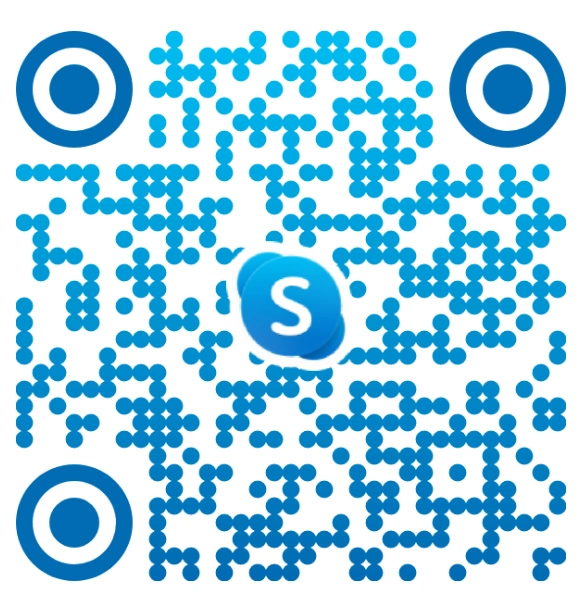Mastering Make Integration: Automate Omnichannel Workflows Without Coding
Introduction
Managing various platforms and tools can create complexity for businesses, often leading to inefficiencies and operational bottlenecks. From emails to CRM systems and customer support, manually handling each task can be tedious and prone to errors. Make Integration solves this problem by providing a no-code automation platform that seamlessly connects all your favorite apps. It enables businesses to automate workflows across different channels without requiring any technical expertise, making processes more efficient and error-free.
With Make, companies can unify their tools, automate key tasks, and optimize workflows to deliver a smooth and consistent experience for customers. Whether it’s for marketing, customer service, or internal operations, Make streamlines tasks, saving valuable time and reducing manual errors.
In this blog, we’ll explore how Make Integration can transform your business by automating workflows, improving operational efficiency, and enhancing the overall customer experience.
Understanding Make Integration
Make is a visual automation platform that connects apps and services to build intelligent workflows, known as scenarios. Its drag-and-drop interface simplifies creating automations, from simple tasks to complex processes, without coding. Make integrates with various tools like Google Sheets, Slack, and Shopify, allowing businesses to streamline operations and reduce errors through automation.
Make integration is essential for businesses using multiple platforms. It bridges these tools by automating actions and syncing data across them in real time. This integration is especially valuable for omnichannel workflows, ensuring consistency across all customer touchpoints, such as email, social media, and chat. Additionally, it supports AI solutions for startups, enhancing efficiency and enabling smarter operations.
By integrating multiple tools, Make offers key benefits, including real-time sync, improved collaboration, and centralized control. It updates customer data across systems like CRM and support channels instantly, enhancing accuracy. With Make, businesses can simplify processes, make better decisions, and improve overall efficiency.
Benefits of Make Integration in Automating Omnichannel Workflows
Make integration offers significant advantages when automating omnichannel workflows. Here are some of the key benefits:
Seamless Cross-Channel Automation
With Make, you can easily connect and automate processes across various channels such as email, CRM, and social media. This seamless integration ensures smooth communication and data flow between platforms without manual effort.
Time and Resource Efficiency
Automating repetitive tasks with Make helps your team save time and focus on more strategic work. This eliminates the need for manual intervention, improving productivity across the board.
Increased Accuracy and Consistency
By automating workflows, Make reduces human error and ensures consistency across all channels. This results in reliable data and standardized processes that improve overall workflow efficiency.
Scalability
As your business grows, Make allows you to easily scale workflows without increasing resources or staff. You can replicate workflows and make adjustments as needed, supporting your business’s growth with minimal effort.
Enhanced Customer Experience
With Make, you can respond to customers faster, personalize interactions, and ensure timely updates across all platforms. This leads to a smoother and more efficient customer experience.
Customizable Workflows
Make offers the flexibility to create workflows tailored to your specific business needs, from simple automations to complex, multi-step processes, providing full control over your automation setup.
Also Read : AI-Powered Process Mining for Business Automation
How to Build Your First Workflow with Make
Building a workflow with Make integration is simple and doesn’t require any coding skills. Here’s a streamlined guide to help you create your first automation workflow:
Step 1: Select Apps
Start by choosing the apps you want to connect and automate, such as Typeform and Asana. Ensure these apps are connected to Make, so they can communicate with each other. You can select from hundreds of popular apps like Google Sheets, Slack, or Mailchimp.
Step 2: Set Trigger
Choose the event that will start your workflow, such as a new form submission in Typeform or a new email in Gmail. This trigger is the starting point for your automation.
Step 3: Add Actions
Define the actions that should follow the trigger. For instance, after a form submission, you might want to send a welcome email via Mailchimp or create a task in Asana. You can add multiple actions depending on your needs.
Step 4: Map Fields
Map the data fields between apps to ensure information flows accurately. For example, ensure the name and email collected in Typeform are correctly transferred to Mailchimp or Google Sheets.
Step 5: Add Logic
Use filters or conditions to control workflow behavior. For instance, you might want to send an email only if the form submission contains certain criteria. This allows you to add intelligence to your workflow.
Step 6: Handle Errors
Add error-handling modules to manage potential issues automatically. If something goes wrong, you can set up notifications or retry mechanisms, ensuring the workflow continues smoothly.
Step 7: Test & Activate
Before activating, test your workflow to ensure everything works correctly. Once tested, activate the workflow, and it will start running automatically whenever the trigger occurs.
By following these steps, you’ll be able to set up your first workflow with Make integration and automate your tasks effortlessly.
Also Read : No-Code Automation: Simplify Integration & Boost Workflows
How to Optimize Make Integration for Business Efficiency
Optimizing your Make integration is key to improving business workflow automation and driving long-term success. Below are actionable tips to help you get the most out of your Make automation solutions.
1. Monitor Performance
Use Make’s internal monitoring dashboard to track workflow health and identify any bottlenecks that could hinder efficiency. Regular monitoring ensures that your omnichannel workflow automation stays optimized, delivering smooth operations across platforms.
2. Use AI Tools
Integrating AI tools into your workflows can enhance decision-making and automate predictive actions. This artificial intelligence integration leverages Make automation solutions to optimize processes with smarter outcomes, improving both speed and accuracy.
3. Reusable Templates
Save and reuse templates for frequently used workflows to reduce setup time. By utilizing seamless workflow integration, you can create efficient, repeatable processes that cut down on manual setup efforts and increase business productivity.
4. Automated Reports
Automate the generation and emailing of performance reports related to your workflows. With Make integration, you can set up automated reports that provide insights into your workflow efficiency, enabling you to track progress and make data-driven improvements.
5. Refine Workflows
Continuously test, review, and improve workflows based on feedback and analytics. Regular refinement of workflows is essential for optimizing business workflow automation, ensuring that processes remain aligned with evolving business needs and objectives.
Use Cases and Real-World Examples of Make Integration
Make Integration offers powerful AI powered automation across various business functions, optimizing workflows and enhancing operational efficiency. Below are some real-world examples of how businesses can leverage Make automation solutions to drive results.
Marketing Automation
Trigger welcome emails, update CRMs, and send follow-ups, all automatically when a lead subscribes to a newsletter. This omnichannel workflow automation ensures faster communication, streamlined marketing processes, and better lead nurturing.Customer Support
Create tickets in Zendesk, notify Slack, and send updates to the customer, without any manual input. Business workflow automation ensures quicker response times, enhances team collaboration, and keeps customers informed at every step.Inventory Sync
Automatically sync stock data between Shopify, Google Sheets, and warehouse tools. With seamless workflow integration, inventory management becomes more accurate and real-time, reducing stockouts and overstocking issues across multiple platforms.HR Onboarding
From welcome emails to Slack invites and documentation workflows, onboard new hires without manual steps. By leveraging Make automation solutions, HR teams can streamline the entire onboarding process, improving employee experience and reducing administrative workload.
Why Choose Amplework for Make Integration and Automation Solutions?
At Amplework, we understand that Make integration is more than just automating tasks; it’s about optimizing your entire business workflow. Our team specializes in crafting customized solutions using platforms like Make to automate processes that enhance efficiency, accuracy, and overall productivity. Additionally, our low code development services enable businesses to quickly deploy solutions without the need for extensive coding, streamlining the automation process even further.
Here’s why Amplework stands out:
- Certified Make Integration Experts: With years of experience, our team is proficient in Make automation solutions, ensuring smooth and reliable integration that enhances your business workflow automation.
- Industry-Specific Automation Strategies: We tailor our omnichannel workflow automation to meet the unique needs of your industry, ensuring maximum impact and efficiency.
- End-to-End Workflow Design: From initial consultation to deployment, we offer seamless workflow integration that covers all aspects of automation, making the process hassle-free.
- Dedicated Support Team: Our experts are available to provide ongoing support, ensuring that your automated workflows continue to run smoothly.
- Proven Track Record Across Multiple Verticals: We’ve successfully integrated Make in diverse industries, helping businesses streamline processes, reduce manual tasks, and scale effectively.
If you’re looking for a reliable partner for Make integration and business workflow automation, Amplework is here to help you scale smarter, faster, and more efficiently.
Conclusion
Make Integration is a powerful tool for businesses looking to streamline operations through seamless workflow integration across various platforms. Its no-code automation platform enables users to automate tasks and processes without the need for complex coding, making it accessible to both technical and non-technical teams. With Make automation solutions, companies can enhance their operational efficiency and achieve omnichannel workflow automation, ensuring consistent customer experiences and smooth internal workflows.
By adopting business workflow automation with Make, businesses can scale operations, improve accuracy, and reduce manual work with ease. The ability to integrate multiple apps and automate tasks based on specific enterprise solutions needs enables companies to optimize processes while saving time and resources. Whether improving customer interactions or streamlining internal operations, Make is an essential tool for businesses aiming to stay competitive and efficient.
Frequently Asked Questions (FAQs)
What is Make Integration?
Make Integration is a no-code automation platform that connects apps and automates workflows, enabling businesses to streamline processes without requiring any technical knowledge or coding skills.
How can Make improve my business processes?
Make enhances business processes by automating repetitive tasks, eliminating errors, and integrating tools in real-time, boosting efficiency, and improving decision-making across departments without manual intervention.
Can I use Make to integrate all my business tools?
Yes, Make integrates with thousands of apps and services, allowing you to connect tools like CRMs, marketing platforms, eCommerce sites, and more to create seamless, automated workflows.
Is Make suitable for small businesses?
Yes, Make offers for free and affordable plans, making it perfect for small businesses. It allows them to automate workflows, scale operations, and save on costly technical resources or development time.
Do I need coding skills to use Make?
No, Make is a no-code platform. It offers an intuitive drag-and-drop interface, allowing users with no coding experience to create, modify, and manage workflows easily.
How do I get started with Make?
Sign up at Make.com, connect your apps, and use its visual builder to create workflows. It’s simple to start, and no coding knowledge is required for automation.
Can Make help with omnichannel marketing automation?
Yes, Make excels at omnichannel marketing automation. It integrates multiple marketing platforms, allowing businesses to create unified workflows that manage email campaigns, social media, and more seamlessly across channels.
Is Make scalable for growing businesses?
Yes, Make is highly scalable. You can easily replicate, adjust, and optimize workflows as your business expands, allowing you to keep automation aligned with your growth without added complexity.
What types of workflows can I automate with Make?
Make automates a variety of workflows, including customer support, lead generation, email marketing, inventory management, social media updates, and more, streamlining tasks across departments to boost efficiency.
How do I monitor my workflows in Make?
Make provides an internal dashboard to monitor workflows. You can track their status, identify issues, view performance reports, and optimize workflows to ensure smooth operation and continuous improvement.


 sales@amplework.com
sales@amplework.com
 (+91) 9636-962-228
(+91) 9636-962-228





